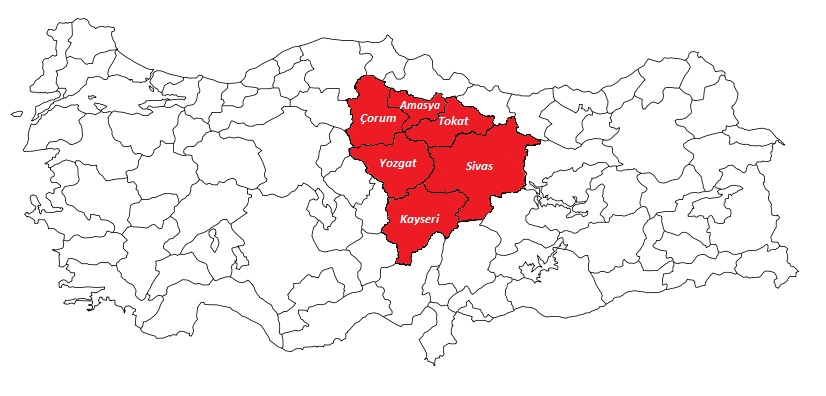Regional Responsibilty Area: Tokat, Amasya, Sivas, Yozgat, Çorum and Kayseri

Responsibilties: Orcharding, viticulture, vegetable, grains, industrial crops, food grain legumes, medicinal aromatic plants, grassland forage crops, plant health and soil water resources issues
- Devoloping new varieties, lines, productivity and quality, increasing resistance to disease, pests and adverse environmental conditions, using new techniques and technologies such as biotechnology and carrying out principal and applied researches, in line with breeding and growing technics and market requirements.
- Carrying out research targeting to increase the efficiency in plant nutrition and pest control by agricultural mechanization, information technology and early warning systems; decrease the crop loss during and after the harvest.
- Registering the variety and lines developed through reclamation, providing the continuation of the reclamation material and realising the seed production of the improved variety at the elite and original level.
- Carrying out research on alternative crops in order to increase the variety.
- In order to ensure the conservation and sustainable use of biological diversity collection, preservation, identification, culturing where necessary and using under the breeding program of plant genetic resources within the responsibity area.
- Conduct studies on methods to combat with pests and diseases of fruit and vegetables,
- Developing appropriate methods and technologies for the efficient use of water in agriculture and determining conditions for low quality water in agricultural irrigation
- Determining the potential productivity of the soil, investigating the effects of plant nutrients and soil regulators on the soil productivity and quality, developing appropriate fertilization techniques,
- Making researches to Protect the water resources in catchments and to ensure of sustainable use.
- Determining the required precautions to decrease the negative effects of salinity, erosion and desertification and developing applicable reclamation method.
- Establishing soil and land information systems and related databases.
- Determining the potential changes created by climate change on soil, water resources and garden plantation and developing the appropriate adaptation recommendations.
- Monitoring the vegetation in the main plant groups, carrying out observations, preparing reports on harvest predictions during development and harvest periods to prepare recommendations to avoid potential crisis.
